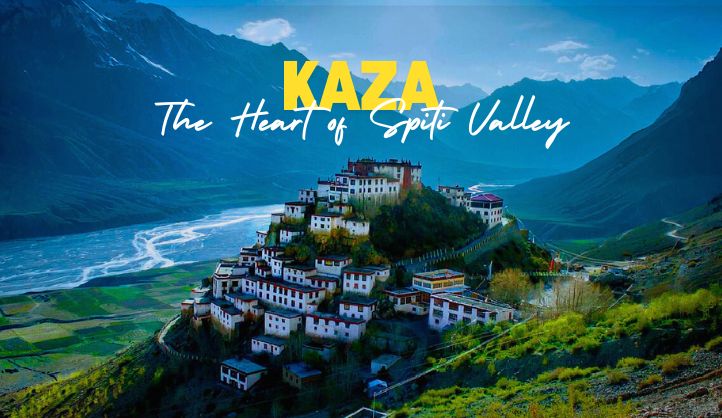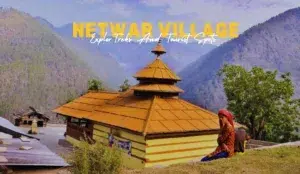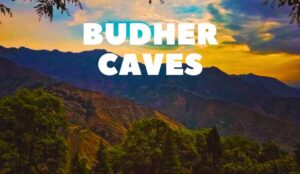In the lap of Himachal Pradesh Kaza is a remote town that serves as the capital of the Spiti Valley. Kaza, often called the “Gateway to Spiti.”. It is around 3,650 meters (11,980 feet) above sea level. Kaza is an oasis of Tibetan culture with Himalayan landscapes and rich history. Known for its high-altitude desert terrain, breathtaking monasteries, and vibrant festivals, Kaza is a place that attracts adventurers, nature lovers, and seekers of peace. This beautiful town has two parts: Old Kaza, with more traditional structures, and New Kaza, which has government offices and new buildings.
Historical Significance of Kaza
Kaza has a rich history steeped in Buddhist culture. The influence of Tibetan Buddhism is evident through the various monasteries, stupas, and prayer flags that dot the town. Historically, Spiti Valley has served as a cultural and trading bridge between India and Tibet. Monasteries in the area, such as Key Monastery and Dhankar Monastery, are some of the oldest in the world, dating back to around 1000 AD. These monasteries not only hold historical value but are also repositories of ancient Buddhist scriptures, thangka paintings, and artifacts.
Geography and Climate
Kaza is located on the banks of the Spiti River, surrounded by barren mountains and sparse vegetation. The region is classified as a cold desert, with temperatures varying drastically from summer to winter. Summers are mild and comfortable, while winters can be extremely harsh, with temperatures often dropping below -20°C (-4°F).
The terrain is rugged and the roads leading to Kaza are challenging, adding to the adventure of visiting this remote town. Its high-altitude desert landscape is a sight to behold, with stark mountain ranges, deep valleys, and pristine rivers creating a unique geographical contrast.
How to Reach
By Air
The nearest airport is Bhuntar, near Kullu, about 250 km from Kaza. From Bhuntar, travelers can either hire a taxi or take a bus.
By Train
The closest railway station to Kaza is Joginder Nagar Railway Station, but it is quite far, and reaching it from here requires a combination of bus and taxi travel.
By Road
There are two main routes to reach Kaza by road:
- Manali-Kaza Route: This route is accessible during the summer months (June to October) when the snow melts. The drive takes around 8-10 hours and involves crossing the high-altitude Rohtang Pass and Kunzum Pass.
- Shimla-Kaza Route: Open year-round, this route is accessible from Shimla and goes through Kalpa, Nako, and Tabo. Although longer, it is preferred by tourists in winter as the Manali route is closed due to snow.
Best Time to Visit Kaza
The best time to visit Kaza is from May to October, as the weather during these months is pleasant, with clear skies and accessible roads.
- Summer (May to July): Ideal for sightseeing, trekking, and exploring monasteries.
- Monsoon (August): The monsoon season brings heavy rains, which may cause landslides, so travelers should be cautious.
- Winter (November to April): Extremely cold, with temperatures often dropping below freezing. Only accessible via the Shimla route.
Major Attractions in Kaza
Key Monastery
Key Monastery is the most famous monastery in the Spiti Valley. Built in the 11th century, the monastery is perched atop a hill and offers panoramic views of the Spiti River valley. Its walls are adorned with murals, and it houses precious manuscripts and ancient artifacts.
Dhankar Monastery
This 1000-year-old monastery overlooks the confluence of the Spiti and Pin Rivers. Dhankar Monastery is known for its precarious location on a cliff, as well as its serene atmosphere, ancient Buddhist scriptures, and sculptures.
Langza Village
Known for its marine fossils and iconic Buddha statue, Langza is one of the highest villages in the world, standing at around 4,400 meters (14,435 feet). Visitors can explore fossil-rich areas and experience the simplicity of village life.
Hikkim Village
This small, remote village is home to the world’s highest post office, situated at 4,400 meters above sea level. Sending a postcard from Hikkim is a unique experience that appeals to both locals and tourists.
Chicham Bridge
Asia’s highest suspension bridge, Chicham Bridge, offers magnificent views of the gorge below. The bridge, connecting the villages of Kibber and Chicham, is a marvel of engineering and a great spot for photography.
Komic Village
With an altitude of 4,587 meters, Komic is one of the world’s highest motorable villages. Komic Monastery, also known as the Tangyud Monastery, is a peaceful site that exudes mysticism and offers visitors a glimpse into the monastic lifestyle.
Cultural Significance and Traditional Festivals
The cultural fabric of Kaza and the surrounding villages is woven with Buddhist traditions, as evidenced by the numerous monasteries and Tibetan-influenced customs. Festivals in Kaza offer a unique insight into the local culture and serve as an opportunity for the community to come together.
- Losar Festival: Celebrated in February, Losar marks the Tibetan New Year. This festival is celebrated with traditional music, dance, and rituals, where locals wear colorful attire and perform cultural dances.
- Chakhar Mela: A festival that occurs every three years, the Chakhar Mela celebrates the deity of Chicham village. It attracts people from nearby areas and is marked by elaborate ceremonies and offerings.
Adventure Activities and Outdoor Experiences
It is a paradise for adventure seekers, offering numerous outdoor activities in and around the town:
- Trekking: The Spiti Valley offers some of the most challenging and scenic treks in the Himalayas, including the Pin Parvati Pass trek and Parang La trek, both of which traverse incredible landscapes and test trekkers’ endurance.
- Mountain Biking: Kaza’s rugged terrain and scenic trails make it an ideal destination for mountain biking. The Kaza-Langza-Komic circuit is particularly popular among bikers.
- Camping: Camping in Kaza allows travelers to experience the raw beauty of the Spiti Valley. Stargazing is a popular nighttime activity due to the high altitude and lack of pollution.
- River Rafting: The Spiti River offers thrilling white-water rafting experiences, especially during the summer months when the snowmelt increases the river’s flow.
- Wildlife Spotting: Spiti Valley is home to some rare and exotic species, including the snow leopard, Himalayan ibex, red fox, and golden eagle. Winter brings opportunities for spotting the elusive snow leopard.
Local Cuisine: What and Where to Eat
The cuisine reflects Tibetan and Himachali influences, with simple but hearty dishes that are perfect for the cold climate:
- Thukpa: Thukpa is a noodle soup made with meat or vegetables, perfect for warming up in the chilly weather.
- Momos: Steamed or fried dumplings filled with vegetables or meat.
- Tsampa: A traditional Tibetan dish made from roasted barley flour.
- Butter Tea: This Tibetan tea is made with yak butter, salt, and tea leaves, providing energy and warmth.
Accommodation Options
It provides a wide range of lodging choices that cater to various budgets and preferences, from cozy guesthouses to unique homestays that immerse travelers in local culture. Here are a few more popular options:
- The Spiti Valley Homestay: For travelers looking to experience authentic Spitian hospitality, homestays are a fantastic choice. Many families in Kaza and nearby villages open their homes to tourists, offering comfortable stays and homemade local meals.
- Norling Guest House: Located near the main market, Norling Guest House is ideal for budget travelers, offering clean, basic rooms and easy access to the town’s amenities.
- Camping: For a truly immersive experience, camping around Kaza or at designated camping sites can be a great way to enjoy the tranquility of Spiti’s night skies.
Conclusion
Kaza offers a rare blend of tranquility, adventure, and cultural immersion in one of the most remote and captivating landscapes of the Indian Himalayas. From exploring historic monasteries to embarking on high-altitude treks, or simply absorbing the beauty of rugged desert mountains, a journey to Kaza can be a transformative experience.
With its friendly locals, unique attractions, and an atmosphere steeped in spirituality and tradition, Kaza stands as an ideal destination for those seeking adventure as well as introspection. Whether you’re sending postcards from the world’s highest post office in Hikkim, watching the sunrise over Key Monastery, or sipping on warm butter tea in a local’s home, Kaza promises memories that will last a lifetime.
FAQs about Kaza
What altitude is Kaza located at, and is it prone to altitude sickness?
Kaza sits at an altitude of around 3,650 meters (11,980 feet). It’s advisable to acclimatize yourself gradually, especially if you’re traveling from lower altitudes, to avoid altitude sickness. Staying hydrated and avoiding intense physical activity in the first few days can help.
What are the main modes of transport in Kaza?
Within Kaza, most places are accessible by foot or by hiring local taxis. Motorbikes are also available for rent. However, public transportation is minimal, so travelers should plan for limited mobility options.
Are there any medical facilities in Kaza?
Kaza has a primary healthcare center for basic medical needs, but services are limited. For more serious medical attention, travelers may need to go to Manali or Shimla. It’s also recommended to bring any necessary medications, as pharmacies are limited.
What essentials should I pack for a trip to Kaza?
Essentials include warm clothing (even in summer), sunscreen, sunglasses, a reusable water bottle, and sturdy trekking shoes. Basic medical supplies, including altitude sickness tablets, can be useful for those prone to altitude sickness.
Is it safe to travel to Kaza?
Yes, Kaza is generally safe for tourists. However, the remote, high-altitude environment requires adequate preparation and awareness of possible health issues related to altitude.
What kind of network connectivity is available?
BSNL and Jio have some network coverage in Kaza, although it can be intermittent. Wi-Fi is available in some guesthouses, but speeds are typically slow. Travelers should be prepared for limited connectivity.





